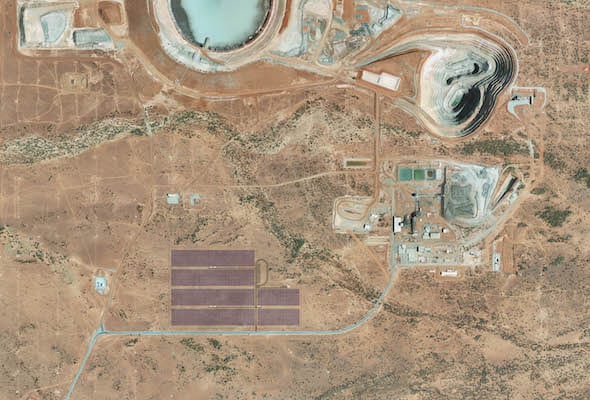A groundbreaking solar plus storage project that could transform the way Australia’s remote mining industry sources power has been backed by the Clean Energy Finance Corporation and the Australian Renewable Energy Agency, with the two institutions putting $35 million towards the development.
The DeGrussa mine project, Australia’s largest solar and battery storage proposal to date, will see a 10.6MW solar plant plus 6MW of battery storage installed at an existing copper and gold mine, 900km north-east of Perth.

Construction started this week on the $40 million project, which was acquired and co-funded by leading French renewables firm Neoen. The CEFC is putting in $15 million, and it has also been supported by a grant of $20.9 million from ARENA.
The single-axis solar tracking facility, along with the battery storage system, was developed and will be installed and operated global outfit, juwi, who originally coordinated the proposed development.

Once operational in early 2016, the plant is expected to provide the majority of Sandfire’s daytime electricity requirements, offsetting about 5 million litres of diesel fuel (used in an existing diesel-fired generator) per annum and abating over 12,000 tonnes of CO2-e annually.
Sandfire will purchase the solar power generated at an agreed fixed rate, lower than the historical cost of diesel-generated power.
“This is an important project showing the significant potential for off-grid renewables in regional and remote Australia,” said CEFC CEO Oliver Yates in a statement on Wednesday.
“The solar and battery storage combination offers the opportunity to reduce the reliance on diesel-powered energy in remote area mining.”
Yates – who has had a tough few days, after receiving a directive from the federal government to cease all support of small-scale solar PV and wind energy projects and to focus instead on emerging technologies – notes that energy can account for around 30 per cent of operating costs for remote area and off-grid Australian miners, who have traditionally relied on diesel-fired generators.

Back in February, juwi managing director Andrew Drager told RenewEconomy there were at least 10 other mines in Australia looking at the solar plus storage option to help deflect high diesel prices.
“For mining companies risk is the key point,” Drager said. “One 10-second down time can have a large cost impact. This (project) will show other mines that those risks can be managed, and are not big technical risks.”
“The (DeGrussa) system is at the forefront of transforming the remote power generation sector and the resource industry into one with a sustainable future.”
ARENA CEO Ivor Frischknecht said the project would help bolster the mining industry’s confidence in renewable energy, while also reducing its reliance on fossil fuels.
“Remote industries in Australia currently rely on 1.2 GW of power from diesel fuel that is prone to price volatility and supply interruptions,” he said in a separate statement on the DeGrussa development.
“Renewables are already competitive with fossil fuels in many off-grid applications, offering a strong, secure and reliable alternative to trucked-in diesel.
“ARENA support will help overcome the early-mover costs currently facing renewable mining projects. The undertaking at DeGrussa is supported by modelling showing similar projects could be viable without government subsidies in the near future,” Frischknecht said.
“As with all ARENA supported projects, a detailed knowledge sharing plan has been developed to share operational data and information about the risks, diesel savings achieved and strategies to enable higher penetrations of renewables.”








